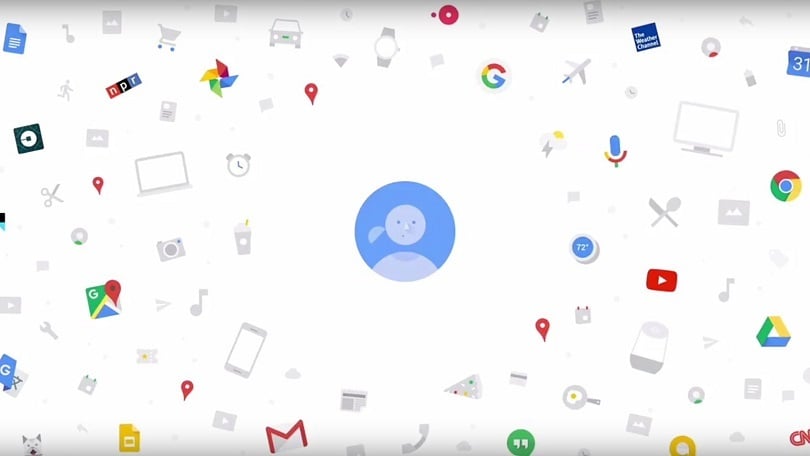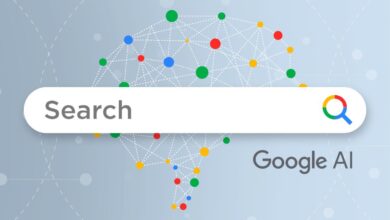Why Developers Are Abandoning Google’s Ecosystem

The relationship between Google and the global developer community has long been a cornerstone of the modern digital economy. For years, Google was not just a tech giant; it was a partner, a platform provider, and the de facto standard for building the future. However, a significant and accelerating shift is underway. A growing wave of developers, from indie hackers to enterprise teams, are consciously decoupling from Google’s ecosystem, opting instead for a diverse array of rival platforms and tools.
This migration isn’t a fleeting trend but a strategic response to a complex web of challenges posed by Google’s ever-evolving policies, product strategies, and corporate priorities. To understand the modern software landscape, one must delve into the core reasons behind this exodus and explore the promising alternatives that are reshaping the world of code.
A. The Core Catalysts: Why Developers Are Seeking Alternatives
The decision to leave a deeply integrated ecosystem is never taken lightly. For developers, the move away from Google is driven by several critical, interconnected factors.
1. The Agony of Abrupt Product Sunsetting
Perhaps the most significant erosion of trust stems from Google’s notorious reputation for discontinuing beloved and widely adopted services. The “Google Graveyard” is a sprawling digital cemetery filled with products that developers built businesses and workflows upon, only to see them abruptly terminated.
Notable Casualties:
-
Google Cloud Print: A reliable cloud-based printing solution killed off without a direct, fully-featured replacement.
-
Google Hangouts: A once-core communication platform for teams and individuals, slowly and confusingly dismantled into Chat and Meet.
-
AngularJS: The abrupt end-of-life for this foundational JavaScript framework forced massive, costly rewrites for thousands of companies, demonstrating that even core development tools aren’t immune.
This pattern creates immense uncertainty. Developers cannot risk building critical infrastructure on a platform that might vanish in 2-3 years, potentially incurring massive technical debt and migration costs.
2. Soaring Costs and Unpredictable Pricing in the Cloud
Google Cloud Platform (GCP) is a powerful competitor to AWS and Azure, but many developers and startups report experiencing “sticker shock.” While initial credits and free tiers are attractive, scaling often leads to complex and unpredictable billing. Costs for data egress (moving data out of GCP) and compute instances can spiral quickly without meticulous and constant monitoring. For bootstrapped startups and indie developers, this financial unpredictability is a non-starter. Rivals often offer more transparent, predictable, and sometimes flat-rate pricing models that are easier to budget for.
3. The Intricate Web of Data Privacy and Security Apprehensions
Google’s entire business model is predicated on data aggregation and advertising. While Google Cloud professes a separation between its ad business and cloud infrastructure, developers working on privacy-centric applications, handling sensitive healthcare (HIPAA) or financial (PCI DSS) data, or simply serving a privacy-conscious user base (particularly in Europe under GDPR) are increasingly wary. The perception, whether entirely accurate or not, is that data within Google’s ecosystem is part of a larger data-harvesting machine. This drives them towards providers like Oracle Cloud, IBM Cloud, or specialized privacy-focused hosts that boast a more transparent, privacy-first foundational ethos.
4. Overwhelming Complexity and a Fragmented Ecosystem
The Google developer ecosystem is vast: Firebase, GCP, Android Studio, Flutter, Angular, and a myriad of APIs. While powerful, the sheer number of tools and their sometimes-overlapping functionalities can lead to analysis paralysis. Navigation between different consoles (Google Cloud Console, Firebase Console, Play Console) feels disjointed. Furthermore, the developer experience (DX) and documentation, while improved, are often criticized for being less intuitive and cohesive compared to the streamlined experiences offered by rivals like Vercel or Netlify for web development.
5. The Allure of Open Source and Vendor Neutrality
The modern developer ethos is deeply aligned with open-source principles: transparency, collaboration, and freedom from vendor lock-in. Google’s mixed relationship with open source releasing projects like Kubernetes and Go while tightly controlling Android and its ecosystem creates friction. The fear of “vendor lock-in” is potent. Once a project is deeply integrated with proprietary Google APIs, Auth services, and cloud functions, extracting it becomes a Herculean task. Developers are thus gravitating towards open-source-first and vendor-neutral solutions that guarantee portability and long-term control.
B. The Promising Alternatives Developers Are Embracing
The vacuum left by Google’s missteps has been rapidly filled by a new generation of agile and focused competitors. These platforms are winning developer hearts and minds by directly addressing the pain points listed above.
A. The Cloud & Infrastructure Contenders
-
Amazon Web Services (AWS) & Microsoft Azure: The established giants. They offer unparalleled global scale, a vast array of services, and most importantly, a perceived long-term stability that Google Cloud has yet to convincingly project. Enterprises value this predictability.
-
Vercel / Netlify: These platforms have revolutionized front-end development and deployment. Their developer experience is sublime offering git-integrated deployments, serverless functions, and global CDNs with a few clicks. They provide the simplicity and focus that Google’s fragmented offering lacks.
-
DigitalOcean / Linode: Beloved by startups and indie developers for their breathtaking simplicity and transparent, predictable pricing. They offer virtual private servers (Droplets), managed databases, and app platforms without the overwhelming complexity of a hyperscaler’s console.
-
Oracle Cloud Infrastructure (OCI): Has aggressively competed on price, particularly for high-performance computing and autonomous databases, attracting enterprises looking to cut costs without sacrificing power.
-
Fly.io / Render: The new breed of platforms focused on running full-stack apps and global databases close to users, offering a fantastic developer experience that abstracts away infrastructure complexity.
B. The Database and Authentication Heirs
-
MongoDB Atlas / PlanetScale: For database needs, many are moving from Firebase’s Firestore to managed services like MongoDB Atlas (NoSQL) or PlanetScale (MySQL-compatible, serverless). These offer powerful scalability without strict vendor lock-in.
-
Supabase / AppWrite: These are the direct, open-source rivals to Firebase. They offer a suite of features including authentication, real-time databases, and serverless functions, but with the crucial advantage of being open source and self-hostable. This completely eliminates the risk of sunsetting and vendor lock-in, making them incredibly attractive.
C. The Communication and API Champions
-
Twilio / SendGrid: For communication APIs like SMS, email, and voice, Twilio remains the gold standard for reliability and feature richness, far surpassing the offerings and stability of Google’s communication products.
-
Stripe: For payments, Stripe has won the internet. Its API is famously developer-friendly, its documentation is exemplary, and it fosters immense trust—a stark contrast to the uncertainty surrounding Google’s payment products.
C. Strategic Implications for the Future of Development
This mass migration is more than a change of tools; it’s a philosophical shift in how software is built.
-
The Multi-Cloud Mandate: To avoid future lock-in and increase resilience, developers are architecting systems to be multi-cloud by default. This means designing applications to run seamlessly on AWS, Azure, or GCP, using Kubernetes for orchestration and Terraform for infrastructure-as-code provisioning.
-
The Primacy of Developer Experience (DX): Platforms can no longer compete on features alone. A seamless, intuitive, and enjoyable developer experience is now a primary competitive advantage. Tools that “just work” and get out of the way will continue to gain market share.
-
The Renaissance of Open Source: Trust in corporations is diminishing, while trust in community-driven, transparent open-source projects is growing. The future of development stacks will be built on open-source cores with proprietary managed services layered on top for convenience.
D. A Path Forward for Google: Can the Ship Be Steered?
All is not lost for Google. The company still possesses incredible technology, a massive talent pool, and deep resources. To win back developer trust, it must undertake fundamental changes:
A. Embrace Radical Transparency and Long-Term Commitments: Google must publicly guarantee long-term support (e.g., 10-year minimum support windows) for critical developer products and provide crystal-clear migration paths years in advance of any deprecation.
B. Simplify and Unify the Developer Journey: Drastically consolidate and streamline its developer consoles and tools. The experience should feel cohesive, not like navigating a dozen different companies.
C. Reinforce the Separation of Church and State: It must more convincingly firewall its advertising data business from its cloud and developer services to alleviate privacy concerns.
D. Champion True Open Source: Beyond just releasing code, it needs to foster genuine community-driven governance for its major projects to build trust that the project exists for the community, not just for Google’s strategic goals.
Conclusion: A New Era of Developer Empowerment
The narrative is no longer about a single company dominating the development landscape. The “great decoupling” from Google signifies a maturation of the industry. Developers are no longer passive consumers of platform dictates; they are empowered architects making conscious choices based on stability, cost, ethics, and experience. This shift towards a diversified, multi-vendor, open-source-friendly ecosystem is ultimately healthier, fostering more innovation, resilience, and competition. It returns power to the individuals who write the code that shapes our world, forcing all platforms, including Google, to listen, adapt, and truly earn their loyalty every single day.






